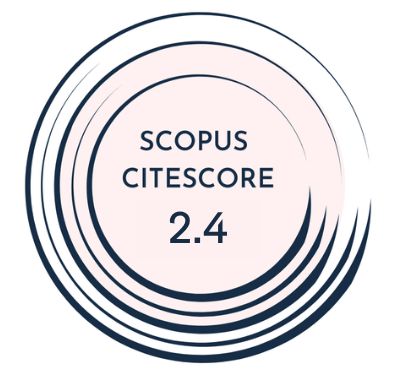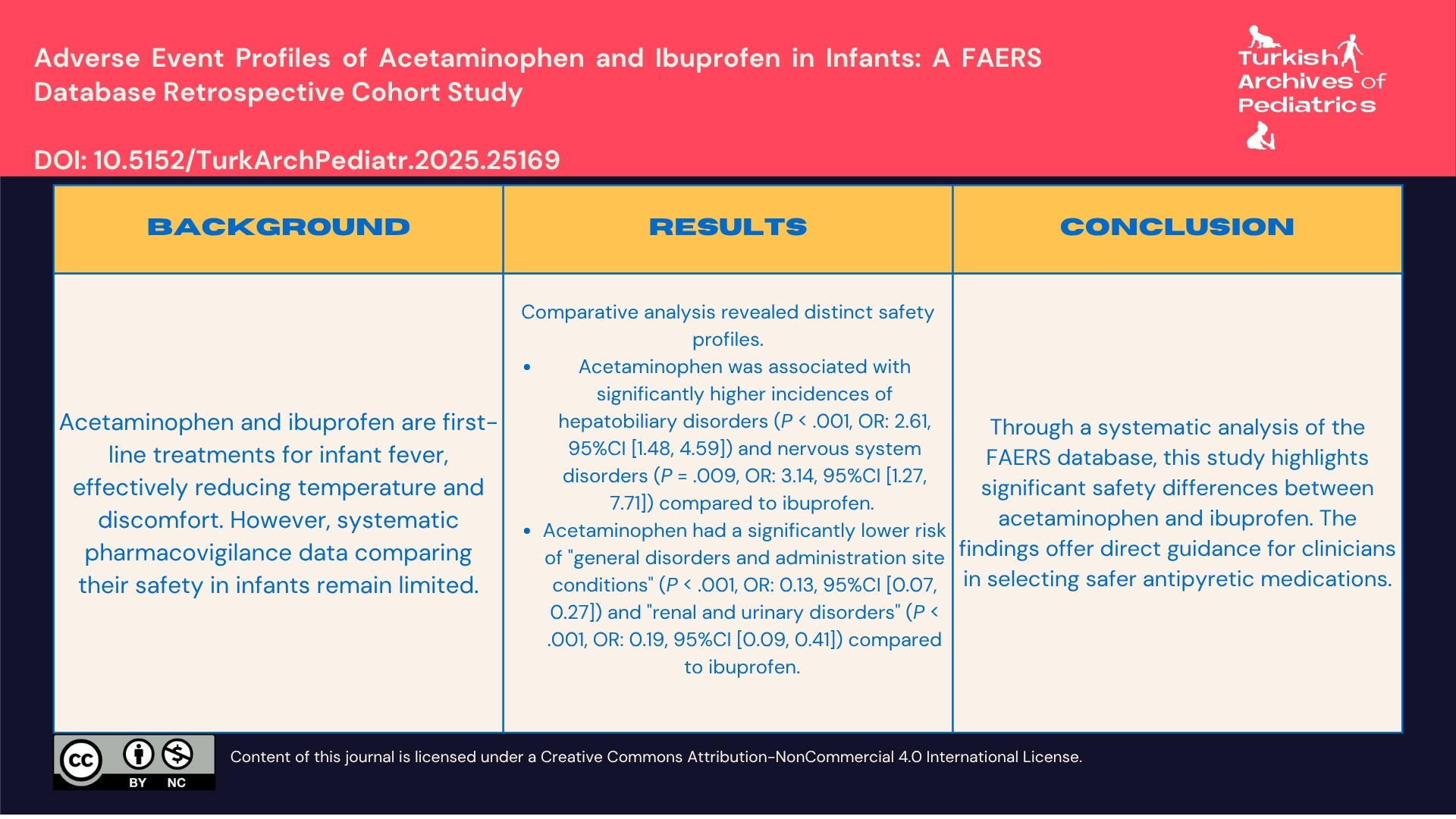Objective: This study aims to analyze adverse events (AEs) associated with the use of acetaminophen and ibuprofen in infants based on the U.S. Food and Drug Administration Adverse Event Reporting System (FAERS) database. The study also seeks to evaluate the safety differences between these 2 drugs to provide scientific evidence for clinical practice.
Materials and Methods: This study utilized the FAERS database and employed 3 statistical methods: Proportional Reporting Ratio, Reporting Odds Ratio, and Bayesian Confidence Propagation Neural Network to identify AEs signals associated with acetaminophen and ibuprofen. The positive AEs signals were classified according to the System Organ Class (SOC) to assess the relationship between Preferred Term signals and their corresponding SOCs.
Results: The total number of reported AEs associated with acetaminophen and ibuprofen was 2102 and 691, respectively. Further comparison showed that acetaminophen was associated with significantly higher incidences of hepatobiliary disorders (P < .001, OR: 2.61, 95% CI [1.48, 4.59]) and nervous system disorders (P = .009, OR: 3.14, 95% CI [1.27, 7.71]) compared to ibuprofen. However, acetaminophen had a significantly lower risk of “general disorders and administration site conditions” (P < .001, OR: 0.13, 95% CI [0.07, 0.27]) and “renal and urinary disorders” (P < .001, OR: 0.19, 95% CI [0.09, 0.41]) compared to ibuprofen.
Conclusion: Through a systematic analysis of the FAERS database, this study highlights significant safety differences between acetaminophen and ibuprofen. The findings offer direct guidance for clinicians in selecting safer antipyretic medications, supporting optimized fever management practices and minimizing drug-related AEs in infants.
Cite this article as: Bao Y, Lv H, Li X, Chen B. Adverse event profiles of acetaminophen and ibuprofen in infants: A food and drug administration adverse event reporting system database retrospective cohort study. Turk Arch Pediatr. 2025;60(6):661-669.



.png)


